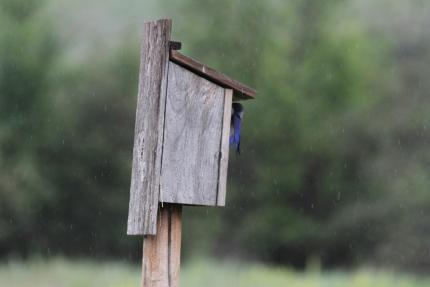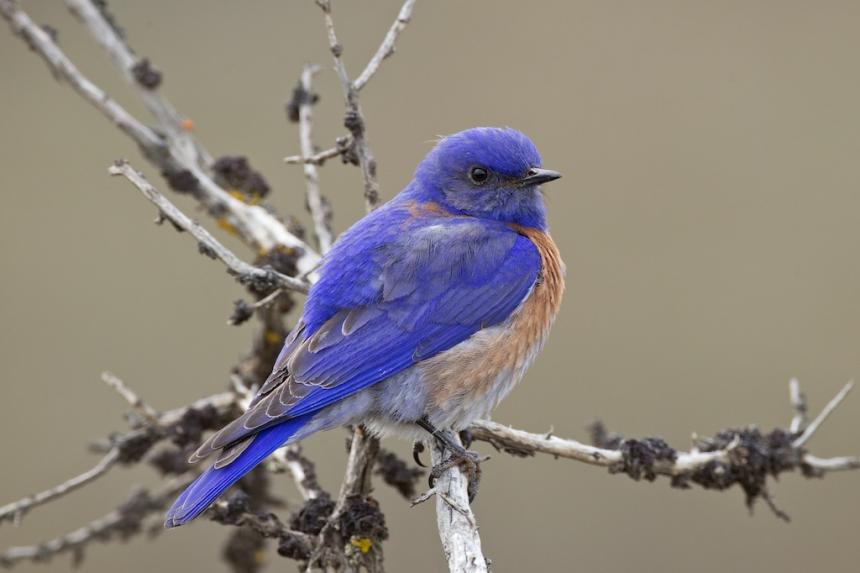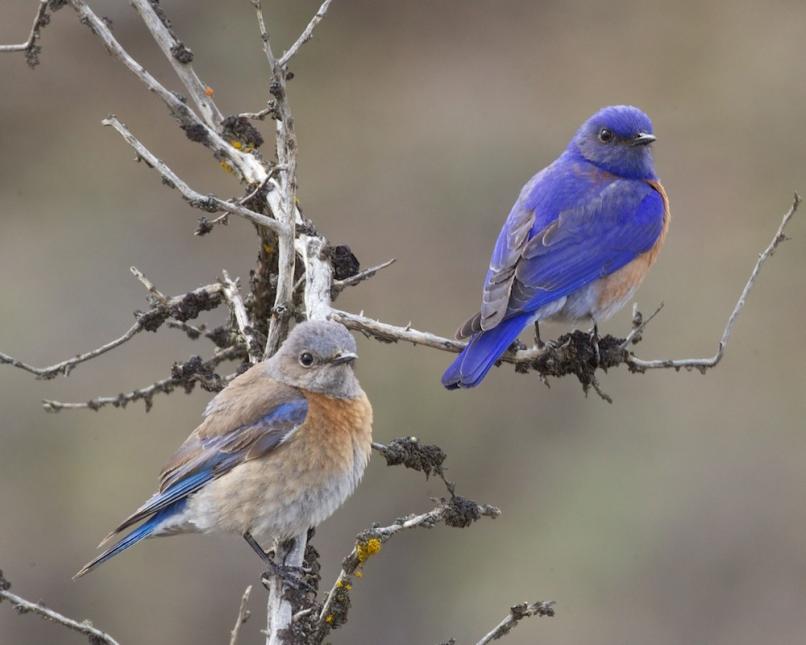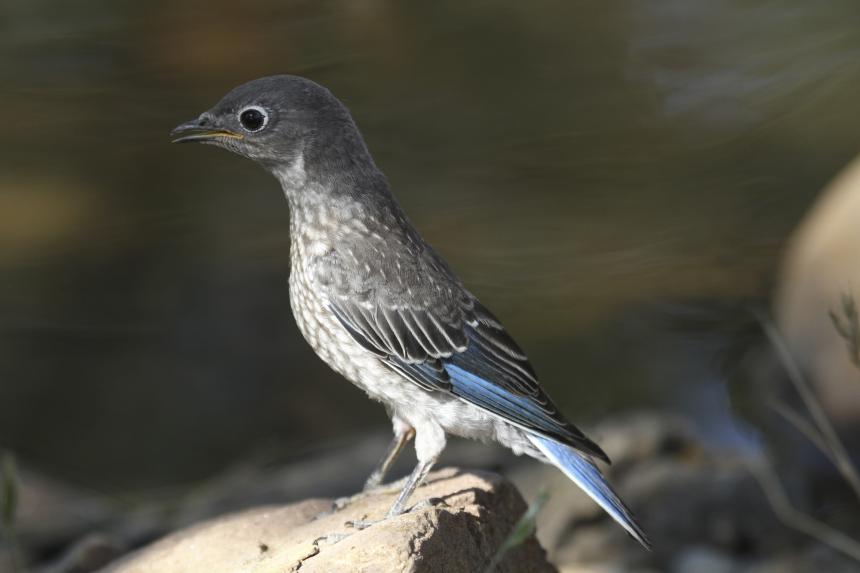Low-
Moderate
The population of western bluebirds in Washington is low and the trend points to it as declining. This bird is designated as a "Species of Greatest Conservation Need" in western Washington. Declines in recent decades caused primarily by habitat loss. Recent reintroductions onto San Juan Island may need additional translocations and removal of competitor’s nests from nest boxes to be successful.
Description and Range
Physical description
Western bluebirds are 7 inches long. Adult males have a deep blue upperside and throat; the breast is rusty-orange with white on the lower belly. Females are similar in color but duller and with a grayish-brown head and upper back.
Ecology and life history
Western bluebirds inhabit woodland/prairie mosaic, agricultural areas and recently harvested or burned forest where snags or cavity trees are present. Cover types includes open woodlands, farmlands, orchards, savanna, riparian woodlands, and burned forests. They use many open forest types, including post-fire and post-harvest forests, if sufficient snags are present to provide nest and perch sites.

Nests are in natural tree cavities, abandoned woodpecker holes, or bird nest boxes, and standing snags/cavity trees are important habitat features.
Western bluebirds are mainly insectivorous, but also feed seasonally on berries and fruit. They are secondary cavity nesters, relying on cavities created by other species.
Most females produce or attempt two broods per year. Fledged young are tended by the male if the female re-nests.
Geographic range
The western bluebird is an uncommon migrant and summer resident in western Washington, except for the Fort Lewis area, where it is common due to an unprecedented nest box program. It was recently reintroduced onto San Juan Island.
Availability of nesting cavities is a major limiting factor for bluebird populations. Breeding Bird Survey data show no significant change in numbers from 1966 to 2012. Nest box programs have been used with much success, and a breeding population that has exceeded 200 pairs has been documented at Joint Base Lewis McChord, which constitutes by far the largest breeding location in western Washington.
The remainder of the western population is dispersed and a total population estimate has not been established.
For a map of range-wide distribution and conservation status of this species, check out NatureServe Explorer.
Climate vulnerability
Sensitivity to climate change
Low-
Moderate
Significant historical declines of western bluebird populations in Western Washington are linked with wet conditions that affected prey availability, as well as habitat loss due to human activity. This species likely exhibits physiological sensitivity to temperature (particularly cold temperatures); adults elevationally migrate in response to shifting temperatures, and nestlings may become hypothermic during cold, wet periods. In addition, insect foraging opportunities decline during inclement weather, contributing to nestling mortality via starvation. Western bluebirds nest in snag and tree cavities, and wildfire likely maintains preferred open woodland-prairie habitat and snag nesting opportunities, although it can eliminate specific nesting trees. Open woodland-prairie habitat in the Northwest may expand with drier conditions.
Exposure to climate change
Low-
Moderate
- Colder/wetter spring conditions
- Increased storminess (frequency or intensity)
Conservation
Conservation Threats and Actions Needed
- Management decision needs
- Threat: Scarcity of snags in some forest landscapes.
- Action Needed: Retention of snags via incentive-based programs or other strategies.
- Fish and wildlife habitat loss and degradation
- Threat: Long-term success of translocation efforts.
- Action Needed: Continue to monitor and evaluate success of translocation efforts to the San Juan Islands.
See the Climate vulnerability section for information about the threats posed by climate change to this species.
Resources
References
Buchanan, J. B. 2005. Western Bluebird (Sialia mexicana). Pp 290 - 291 in T. R. Wahl, B. Tweit, and S. G. Mlodinow (eds.) Birds of Washington: Status and Distribution. Oregon State University Press, Corvallis, OR, USA. 436pp.
Slater, G. L. and B. Altman. 2011. Avian restoration in the Prairie-Oak Ecosystem: a reintroduction case study of Western Bluebirds to San Juan Island, Washington. Northwest Science 85:223-232.




